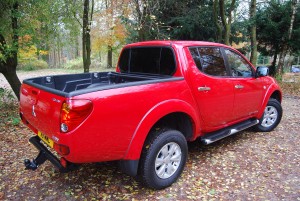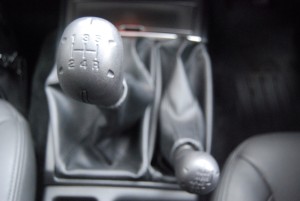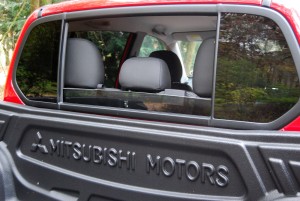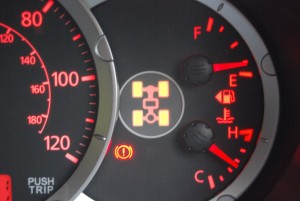Mitsubishi L200 Trojan – Driven and Reviewed
Most of the roads that surround my house are cobbled, gnarly and somewhat antiquated. One, in particular, features a substantial dip running the width of the street, no-one knows how it occurred but many debutants to the road have failed to slow down and their car’s chins have fallen foul of this, almost, anti-speed-bump. Having lived in the area for many years now, it’s second nature for me to slow down to a crawl and therefore preserve my car’s splitter but, for some reason, the dip recently disappeared for a week. There’s no way that our local council suddenly deemed this bumper-killer a priority and fixed it, oh no, this magical occurrence can only be explained by the car I was lucky enough to be testing and its disregard for such uneven surfaces – the Mitsubishi L200 Trojan.
Jack-of-all-trades?
Once the preserve of builders and farmers, pickups have enjoyed a surge in popularity in recent times with the Mitsubishi L200 always at the forefront. A particular genre of pickup has become commonplace on our roads and that’s the double-cab, or crew-cab, just like this L200 Trojan we have here. It doesn’t take an economist to point out the advantages of owning a double-cab as it toils monday to friday as a tireless workhorse and then transforms into a fun, family wagon when required, potentially making a dedicated ‘work van’ redundant. What I wanted to know was, is this Mitsubishi L200 Trojan a jack-of-all-trades or a master-of-none?
The pickup must surely be one of the most challenging genres of vehicle to apply visual highlights to due to their ‘three box’ shape and utilitarian requirements. The last generation L200 was very popular, in no small part because of its butch but attractive looks that seemingly appealed to both sexes equally. Mitsubishi have really gone to some lengths to make this latest take on the L200 stand out from the crowd. With its new, angular, more aggressive ‘face’ and the clever line that runs from the roof, behind the rear doors, all the way to the side rails, scything the L220 in two and turning the cabin and load area into two apparently separate areas, Mitsubishi have created an unmistakable identity for their pickup and stepped away from the associated generic look.
In the Cabin
This multifunctional theme continues in the cabin of the Trojan and Mitsubishi have made efforts to make it a pleasurable environment whilst, at the same time, keeping the practical aspects that are essential in a semi-industrial vehicle. Our test car came with leather seats which could be accused of being something of a luxury in this instance but, all things considered, their ‘wipe clean’ nature is actually more in-keeping with the rest of the interior than cloth may be.
Apart from the delightfully simple climate control, that’s about it for creature comforts in the L200. The dash has been ergonomically shaped to bring it slightly more up to date but don’t go expecting Range Rover grade plastics or B&O stereos, that’s just not what the L200 is all about. Primarily, it’s function over form, all the way.
2.5l Common Rail Diesel
Fire the 2.5l Diesel engine up and, from the cabin, it’s surprisingly civilised. That’s not to say that there isn’t a fair amount of the usual Diesel clatter going on under the bonnet but Mitsubishi have provided ample amounts of insulation to keep the L200’s occupants in as much peace as possible. Our Trojan came with the 5spd manual ‘box and gear-changes were solid and purposeful as one may expect from a vehicle of this type. It’s important to remember, however, that 5th gear is very long and really only for 60mph +, around town, it’s strictly gears 1-4 only. The clutch was actually quite light which made this around town driving as easy as it can be, dimensions allowing.
It’s these dimensions that serve as something of a double-edged sword for the L200 double-cab. As with many Japanese cars, width is kept to a minimum at 1.75m but it’s the length that can be a little intimidating. It would be pointless to shorten a pickup as it would consequently stop serving the purpose for which it was intended, but, at over 5m, this Trojan dwarfs it’s stable-mate – the Shogun by some 30cm.
This length only really becomes an issue when reversing the L200, especially as the rear of the glasshouse stops some 1.5 short of the rear of the body, resulting in quite a bit of guesswork when parking. I found two makeshift solutions to this problem- one was to wind down the electric rear windscreen which increased visibility slightly (not overly accurate), the other was to ask a passenger to get out and watch me back (not overly popular, esp. in rain). The correct way to eliminate this reversing issue is to spec your L200 correctly and opt for the C£400 reversing camera, if there’s one option that just cannot be overlooked, this is surely it.
Leaf-Spring Suspension
Being a ‘proper’ off-roader, the L200 has more than adequate ride height for clearance which gives a good view of underneath and its oily bits, in particular the rear leaf-spring suspension. Although somewhat antiquated in appearance, this setup actually works very well, given the chance and should in no way deter potential suitors. On the road, handling is way better than it deserves to be, given the ride height and technology used and easily embarrasses competition such as LR‘s Defender with its tendancy to wander. Through the corners, the L200 provides ample grip and feedback and will only start to lean and meander if pushed to levels beyond a pickup’s usual remit. The only constant reminder of what the L200’s sitting on comes when the car slows down to a stop – there’s a definite rocking sensation in all directions, not dissimilar to standing onboard the deck of a docked boat.
With no weight over the rear wheels, it can come as something of a surprise when the rear wheels start spinning in first gear at seemingly low revs but, again, the L200 is capable of lugging over a tonne around so the rear axle will be very lively when unladen. Manually selecting 4wd will remedy this and also provide extra levels of confidence on slippery or uneven surfaces. I think that 2wd is more than ample on most roads, however and driving those front wheels will inevitably eat into that all important fuel economy.
In Conclusion
Mitsubishi double cab pickups are a common sight on our roads and it’s easy to see why; it does so many things so well. This, coupled with impressive warranties and build quality make it something of a bargain. Just remember that it is a relatively cheap vehicle with practical roots and it would be unfair to compare certain aspects against 4x4s costing twice as much – if you’re expecting a Range Rover, go buy a Range Rover.
By Ben Harrington
Specifications; Mitsubishi L200 Double Cab (Leather) Trojan, Price – £23,189, Engine – 2.5l Common Rail Diesel, Layout – Front engine, 4WD, Power – 175bhp @ 4000rpm, Torque – 295 lb/ft @2000rpm, Acceleration – 12.2s 0-62mph, Maximum Speed – 103mph max, Emissions – 208 g/km CO2, Economy – 35.8 mpg combined
Related articles
- Mitsubishi L200 Trojan Double Cab Review (magnate.co)






